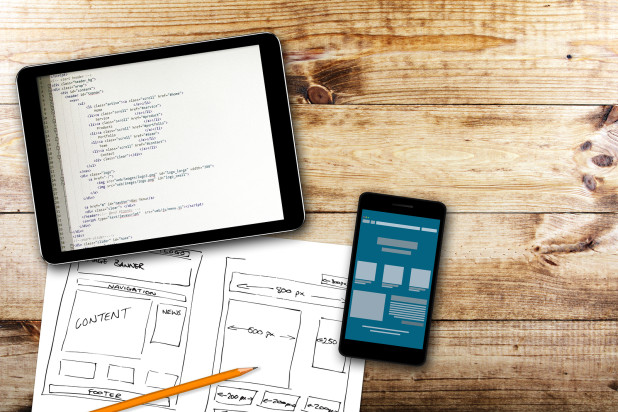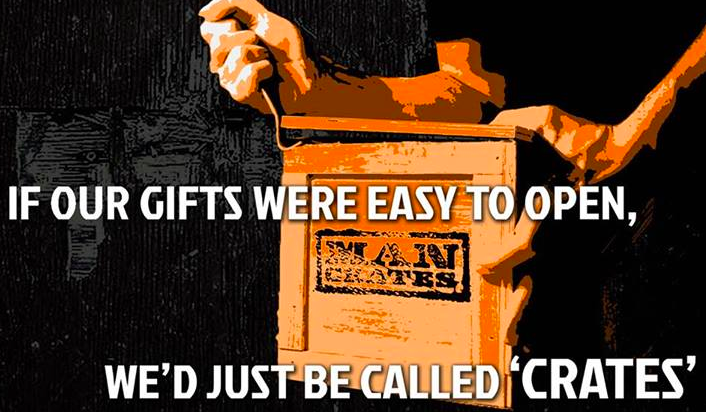
By guest author Tracey Wallace, Managing Editor at Bigcommerce
Do you dream of bringing an online business to life, or expanding your brick-and-mortar store to larger audiences? No matter what you sell, or what business model you follow, this article will guide you through the ecommerce launch process, including website design, payment options and shipping strategies.
Website Design and Usability Go Hand-in-Hand
It is very easy to blur the lines of “design” and “functionality” when building your online store. Not to say that design isn’t important — an attractive website design can drive online sales — but don’t lose sight of the real star of the show: your product.
Online shoppers will decide if they trust you and want to purchase from your website in three to five seconds. That means you need to have a reliable and easy-to-use website that clearly identifies what you are selling. Grady’s Cold Brew is a great example of clean, focused design. Its unique product is front and center in every way.
Space is also key for ecommerce websites, especially the site space living “above the fold,” a term taken from the print-newspaper industry, to represent the area of the website visible without scrolling. “The fold” occurs at different places depending on the size of the screen, so consider how your customers might browse and make changes accordingly.
That said, navigation is the heart of any ecommerce website –– which is why maintaining a full navigation bar with dedicated categories is so critical across all devices. Most responsive ecommerce website designs — ones that adapt the website to fit the viewer’s screen size — keep a full width navigation bar with all categories, so visitors can locate their desired items as quickly and conveniently as possible.
The Nuts and Bolts You Need: Payment and Shipping
When you are ready to launch your ecommerce business website, be sure payment and shipping details are covered and well-explained on your website.
Payment Processing – Identifying the Right Payment Gateway
Payment gateways are services that ecommerce businesses use to collect money from their customers. Your ecommerce platform representative can tell you what gateways work with their system. For instance, Bigcommerce supports over 60 different payment gateways and features one-click setup for PayPal powered by Braintree, which will accept multiple international credit cards, as well.
Here are just a few questions to ask before choosing your payment gateway service:
- Are there set-up fees?
- Are there monthly and/or transaction fees?
- Are there penalty fees? If so, what triggers them?
- Is there a minimum balance requirement?
- What about transfer delays?
- What is the available help/support?
- Is it mobile responsive?
Establishing Shipping Costs and Policies for Your Website
Here are a couple tips to keep in mind when you’re getting started with online shipping:
- Make sure your shipping policy is as clear as possible for your customers, so you can prevent confusion and increase the likelihood of a purchase.
- Offer multiple shipping options based on different shipping speeds or carriers. Keep in mind that high shipping costs are the No. 1 reason for cart abandonment, so strive to provide affordable shipping. If you can, offer free shipping. For brick-and-mortar stores, local pickup may also be a good option for you.
- Organize your order fulfillment process. Even if you carry only a few items, you need to draft up a procedure for what happens when an order comes in. Here are the questions you should consider around fulfillment:
- How do you know you have an order?
- How do you print the invoice? How do you print the packaging slip?
- What information goes with the product in the box?
- Does the look and feel of your packaging reflect your brand?
- How do you organize products that need to be shipped? Are they in bins, refrigerators, rooms or a warehouse?
One online store taking shipping to the next level is Man Crates. Its packaging is so incredible that it is actually part of the product. Each crate comes with a crowbar to open it. If that isn’t intimidating enough, you can upgrade to the Diabolical Duct Tape Cocoon option to up the challenge.
In all, once you have these basics covered, you’ll be able to launch your ecommerce website and begin impressing customers via site design, functionality and customer service. Remember to focus on what your customer needs –– i.e., easy navigation and on-time shipping –– so you can take things to the next level.
About the Author:
Tracey Wallace is the managing editor at Bigcommerce, where she covers topics concerning online small businesses. In a previous life, she wrote about small business and boutique success at Mashable, ELLE and Time Out New York. Her work has been featured on Forbes, Bustle, PolicyMic and Refinery29. She honed her chops at Shoptiques, where she was the director of content for the Y-Combinator startup.






